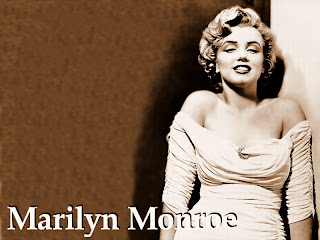
real estate monroe nc
Birth Place: Los Angeles, CaliforniaNationality: AmericanBirth Name: Norma Jean Baker Birthdate: June 1, 1926 Birthplace: Los Angeles, CA Date of Death: August 5, 1962

marilyn monroe picture

monroe la real estate
Husband: Jim Dougherty, factory worker; married June 1942; divorced September 1946Husband: Joe DiMaggio, pro baseball player; introduced in 1950; married January 1954; divorced October 1954; died at age 84 March 8, 1999Husband: Arthur Miller, playwright; married June 29, 1956; divorced January 21, 1961

marilyn monroe quote
Father: Edward Mortensen; deserted Gladys Baker before Norma Jean was bornStepfather: C. Stanley Gifford; worked for Consolidated Film IndustriesMother: Gladys Baker (née Monroe), film cutter; spent years institutionalized for psychiatric problemsHalf-sister: Bernice Miracle
Awards:1953: Golden Globe: World Film Favorite (female)1959: Golden Globe: Best Actress (comedy/musical), Some Like It Hot1961: Golden Globe: World Film Favorite (female)
Education:Van Nuys High School, Van Nuys, California; graduated 1940 Actors Studio, New York, New York (1955); Lee Strasberg was Monroe's personal drama coach Morris Carnovsky Actor's Lab Studied acting with Natasha Lytess and Michael Chekhov
An illegitimate child whose father (Edward Mortensen) had deserted her mother (Gladys Baker, nee Monroe) before she was born, Norma Jean endured a childhood of poverty and misery, sexual abuse (at the age of eight) and years in foster homes and orphanages after her mother suffered a nervous breakdown and was institutionalized.Escape from this cycle came at the age of sixteen with an arranged marriage to a 21-year-old aircraft plant worker. While working at the Radio Plane Company factory in Burbank, she had her picture taken by a visiting Army photographer. Norma Jean then began modeling bathing suits and, after bleaching her hair blonde, began posing for pinups and glamour photos. Howard Hughes saw some of her photographs and expressed an interest in giving her a screen test for RKO, but Ben Lyon of 20th Century-Fox beat Hughes to the punch, signing Norma Jean Baker to a contract and changing her name to Marilyn Monroe.
After appearing in small parts in films including "Love Happy" (1949) and "All About Eve" (1950), Monroe achieved celebrity with starring roles in three 1953 features--"Niagara," "Gentlemen Prefer Blondes" and "How To Marry a Millionaire"--as well as a series of nude calendar photos, taken in 1948, which appeared in the December 1953 debut issue of Playboy-magazine. By the end of the year, Monroe had been voted the top star of 1953 by American film distributors. In all her film roles, from "Niagara" to "The Misfits" (1961), Monroe portrayed an object of desire and exhibition. Her basic character grew out of the dumb blonde archetype, but Monroe's dumb blonde could not be pinned down to any particular origin or social class. She was defined only by what was shown on the screen, with neither a previous history nor seemingly a future. Frequently her characters were namelesss ("Love Happy," 1955's "The Seven Year Itch"), further accentuating her status as an object. She usually had no discernable job and when she did, it was a female-relegated profession such as chorus girl, actress or secretary.
But to the dumb blonde stereotype, Monroe added a sense of innocence, naturalism and overt sexuality. Her sexuality was never seen as a threat, but as something harmless and benevolent. Time magazine's sanguine response to Monroe's Playboy centerfold summed up her appeal: "Marilyn believes in doing what comes naturally." Along with this kindly, innocent sexuality went a vulnerability; Monroe's characters were often humiliated at the expense of a voyeuristic pleasure, whether being lassoed like a cow in "Bus Stop" (1956) or exposing herself unknowingly in "Some Like It Hot" (1959). At the height of her fame, Monroe sensed the limited range of her screen persona and clearly desired to change it: "To put it bluntly, I seem to be a whole superstructure without a foundation." Forming Marilyn Monroe Productions in 1956, she produced "Bus Stop" and "The Prince and The Showgirl" (1957).
But her personal problems, with failed marriages to baseball star Joe DiMaggio and playwright Arthur Miller and increasing reliance on drugs to combat depression and physical ailments, served to forestall any serious change in her career. The public wanted Marilyn as they had discovered her in 1953, and that was what they got in "Let's Make Love" (1960). She was still capable of memorable work, especially with top directors like Billy Wilder ("Some Like It Hot") and John Huston ("The Misfits"), but her personal demons, or precarious involvement with people in high places, eventually overwhelmed her. On August 5, 1962, she was found dead of an overdose of sleeping pills. Monroe's was a tragedy in which her public, the media and the Hollywood power brokers all shared blame.
No comments:
Post a Comment